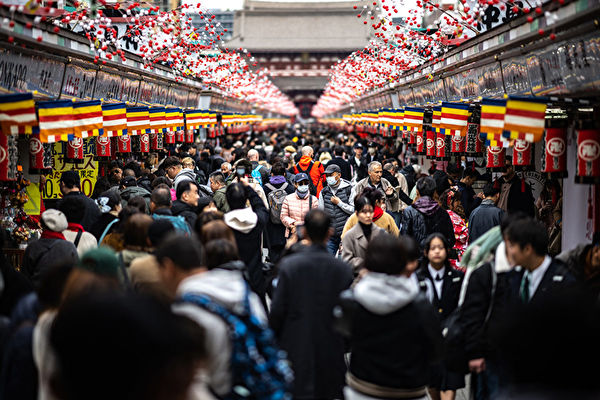In recent years, tourism has become one of the few growing industries in Japan after being a major contributor to the country’s service trade deficit for a long time. In 2003, the Japanese government implemented the “Visit Japan” strategy to boost its economy through inbound tourism, marking a turning point for the industry.
From 2003 to 2019, Japan’s inbound tourism rapidly expanded, showing significant economic benefits. The number of inbound tourists continued to rise, surpassing 10 million in 2013 and consistently exceeding outbound tourist numbers since 2015. Additionally, inbound tourism consumption saw substantial growth, leading to a shift from deficit to surplus in tourism services from 2015 onwards, reaching 2.7 trillion yen in 2019.
The economic ripple effects were evident, with Japan’s tourism consumption output in 2019 being 55.7 trillion yen, contributing 28.5 trillion yen to GDP and providing employment for 4.55 million people, according to data from the Japan Tourism Agency.
Despite being heavily impacted by the pandemic from 2020 to 2022, Japan’s inbound tourism industry experienced a revival in 2023. The number of inbound tourists rebounded to 25.07 million, reaching 79% of the 2019 level. Inbound tourism consumption also surged to 5.3065 trillion yen, a remarkable 10.2% increase compared to 2019.
As Japan entered 2024, inbound tourism soared to unprecedented levels, with the emergence of “over-tourism” phenomenon. The nominal consumption of visitations from January to March amounted to 7.2 trillion yen, growing fivefold in a decade, establishing tourism as one of Japan’s primary export industries, second only to automobiles.
While Japan’s tourism industry flourished, China’s inbound tourism faced significant challenges even before the outbreak of the pandemic in 2020. In 2019, the structure of China’s inbound tourist market was characterized by a lackluster growth rate, with a relatively small proportion of Western tourists.
At the beginning of the “Reform and Opening-Up” era, China’s tourism industry started to develop as a means to generate currency, following Deng Xiaoping’s call to promote tourism revenue. By 1978 to 1988, inbound tourist numbers and tourism foreign exchange earnings grew significantly. However, in the years leading up to the pandemic, China’s inbound tourism growth stagnated, revealing underlying economic downturns and geopolitical challenges.
The pandemic’s impact on China’s inbound tourism was severe, with domestic travel gradually recovering while foreign visitors remained hesitant. Official data showed that in 2023, the number of foreign visitors entering and exiting China only reached 36% of the pre-pandemic levels, significantly lower than domestic travel numbers. The total expenditure by inbound tourists in 2023 represented only 40% and 57% of the 2019 levels, showing a stark contrast to Japan’s tourism recovery.
To stimulate inbound tourism, China implemented various policies, including expanding visa-free entry for select countries, endorsing visa-free policies for international cruise ship ports, and allowing citizens from specific countries to stay in Hainan visa-free for up to 30 days. Despite these efforts, the recovery of inbound tourists in China remained sluggish, with data indicating only 41.5% of pre-pandemic levels in January and February of 2024.
In contrast to Japan’s successful tourism sector, China faced challenges such as pervasive surveillance and limited international flight connections. The profound impact of political decisions on air travel, like the suspension of direct flights between China and India, further hindered the recovery of China’s inbound tourism.
As international travel warnings persist and tourist experiences in China are marred by various obstacles, the future of China’s inbound tourism industry remains uncertain. The Chinese government’s emphasis on leveraging tourism as a tool for diplomacy reflects broader geopolitical strategies, but the sector’s decline underscores ongoing economic and political challenges in China.
In conclusion, while Japan’s tourism industry thrives, China grapples with fundamental issues affecting the revival of its inbound tourism. Geopolitical tensions, policy limitations, and travel barriers pose significant hurdles to the growth and recovery of China’s tourism industry, contrasting starkly with Japan’s success in harnessing tourism for economic growth and international influence.

